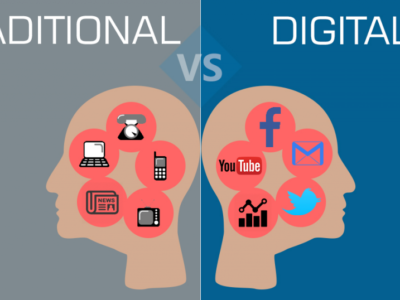– Team DentalReach
Abstract
Randomly formed working groups or incompatibility between team members causes easy team disintegration. But even in a successfully developed group, managers may not not use its commercial potential, not promote it as a special service, as an advantage of the clinic, or derive additional material and psychological benefits from the fact of its formation. In both the cases, the dental dream team formed is a pseudo or false dream team.
An uncomfortable question – who should be the team head?
In a team setup, who handles the OPD maybe arbitrary, usually dictated by the:
- plan for the upcoming treatment
- someone from the necessary narrow specialists works in that shift,
- someone found free time from an appointment,
- someone was interested in the patient's clinical situation.
In clinical practice, there are often cases when a patient is diagnosed with several relatively simple disorders and their elimination requires the intervention of different specialists, not necessarily of the highest qualifications.
Improving the oral cavity includes a whole range of necessary measures for surgery, therapy and probably orthodontics and prosthodontics, but this is performed by individual specialists who repeatedly conduct examinations, and based on the symptoms, narrow specialists make their own diagnosis and carry out their treatment plan. So it turns out that every narrow specialist does not treat the disease, but only removes the symptoms of the disease – it's good if the positive effect lasts for a long time.
There is however, a more thoughtful way out of the situation. The head of the team should be a dentist of the highest category, trained in general dentistry. He/she is assigned the duties of the "head center": he receives primary patients, examines, diagnoses, directs the patient to the doctors who are actual performers of the treatment process, distributes assignments, and after the completion of treatment controls the work of each member of the team and bears responsibility for it as a whole.
Before treatment, the patient is presented with this experienced doctor (in some literary sources he is called a ‘treatment planner’). He knows the possibilities of the doctors of the clinic and "sorts" the patients: it is better to refer this to dentist A, he will cope with this clinical case; and this – to dentist B, he is more likely to solve such a problem. Of course, this is a step forward compared to traditional "impersonality" and some protection against possible low treatment results, but this is not a guarantee of a creative, comprehensive approach to patient treatment.
As you can see, specialists continue to work in isolation, interacting indirectly, through the head. However, to not fall into the trap of a pseudo team, certain questions require honest attention:
- Is the workload for the foreman manageable if OPD is heavy?
- Can we assume that any doctor of the highest category, trained in general dentistry, will adequately cope with the mission entrusted to him?
- What will happen if such a “treatment planner” is mediocre, if he doesn’t know modern technologies in different areas of dentistry, but does something to suit his bosses?
- What impression will the patient make of him if he is a bad communicator or an emotionally burnt-out person?
If this head only allots patients to specialists like a treatment co-ordinator, then how to pay him, because he does not directly earn money?
It seems that such an association of professionals will not work as a whole: it paralyzes the creative potential of doctors, collegial professional experience and intelligence, it is not capable of causing a synergistic effect.
Other options for team head:
Leading the group is usually the responsibility of a person of authority. Good options for a team head include:
- senior in rank (for example, chief physician, senior specialist), or
- a doctor who has the most responsible area of work with a given patient or
- more active doctor-communicator, or
- the members of the group choose the leader by mutual agreement, taking into account the clinical situation and the contribution of the specialist to its solution.
Types of pseudo teams – The brigade type & the Henry Ford conveyor belt type
1. The brigade type
Sometimes specialists with different professional credo and mentality are forced to work together, with different communication and creative abilities, characters and properties of the nervous system. This is the brigade type of pseudo team – uniting narrow specialists in an inadequate form of providing services in complex clinical situations that require the use of the latest technologies.
This pseudo-team includes specialists who differ significantly in the level of professional skill and ethical qualities.
The formation of a good dental team is especially important in small clinics, where the professional level and mentality of specialists differ significantly. It is even more difficult to form a team when a financial plan hangs over each doctor, when the manager and director demand that the doctor surrender at least a specified amount per shift. In clinics that have declared a fight for the average check, there can be no team, here greed reigns supreme.
Case Example 1 There are clinics where dentists who are incompatible in their professional level and ethical principles – for example, an implant surgeon and a prosthodontist – are on the “team” at the behest of their superiors or by accident. It happens that the surgeon acts on the principle of "placing more implants and making more money", without thinking about what difficulties it creates for the prosthodontist and dental technician. At the same time, the prosthodontist may not be skilful enough to handle tricky full arch cases, but only simple ones which further complicates the case. A responsible surgeon cannot guarantee the patient the overall quality of work, as the final prosthesis is handled by the prosthodontist, who also cannot give a guarantee because prognosis heavily depends on correct implant placement – unless both work in synergy with each other.
The overall favorable outcome of treatment depends on the level of qualifications of each narrow specialist, the consistency of their actions, the unity of approaches to the clinical picture and understanding of the ways to achieve the desired results.
2. Henry Ford conveyor belt type
In the Henry Ford conveyor belt type of pseudo team, there is a "capture" of someone else's territory or simply put- ‘case stealing’ – a narrow specialist does something instead of a colleague who was actually supposed to. This happens for various reasons:
- the doctor has mastered a related specialty and tries to realize the acquired skills as much as possible
- brings the narrowness of the clinical thinking of an individual colleague
- the doctor's desire to make more money on each patient
- a thoughtless desire to show originality in solving a problem
- a desire to curry favor with the authorities who like smart colleagues who bring big incomes.
Each specialist, having waited for his turn, performs his own scope of treatment regardless of diagnosis and opinions of other colleagues regarding the general treatment plan, without thinking too much about the logic and intentions of the specialist who acted before him or will join the patient's treatment after.
A common situation: a therapist began treatment of a tooth, and at the next stage, where a prosthodontist works, it turns out that the tooth must be removed, since it cannot serve as a support for the prosthesis. The patient is outraged by the inconsistency in the actions of specialists, and this is evidenced by the responses to the telephone feedback: “Why did you treat a tooth that had to be removed?”; "Why was I charged for something I shouldn't have done?"
An integrated approach to a clinical case becomes formal. The conveyor belt weakens or excludes professional collaboration and harms patients, although individual doctors can work with full dedication.
Case Example 2. The patient was offered a treatment plan: treatment of caries of 3 teeth, local periodontitis, extraction of 2 teeth for chronic periodontitis and restoration of lost teeth with a bridge prosthesis. The patient understands that in a clinic where doctors specialize in specific areas, four dentists should be involved in the implementation of this plan. However, at one of the stages,the therapist convinces the patient that he will perform the extraction of the tooth himself, since the removal is not difficult and he will treat the periodontitis himself, because it also does not seem difficult. The patient is confused: this information does not fit with what other specialists have told about their stages of treatment. Sometimes,penetrating into the “foreign field”, the dentist makes arguments: “I do it too”, “I will give you a discount”.
Due to the blurring of the boundaries of specialization, professional and interpersonal conflicts arise that do not escape the gaze of an observant patient and destabilize the psychological climate in the clinic.
"Conveyor" situations take place in clinics in which production ties are broken:
- there is no value-orientational unity of employees
- everyone works for himself alone
- the chief physician does not cope with his responsibilities for organizing the team style of work
- bad socio-psychological climate
- high staff turnover, which does not allow the formation of stable teams of specialists
- a centrifugal tendency is clearly expressed, in which specialists are ready to quit at an opportunity
- the owner is more on vacation than in the clinic
- strategic and organizational management is bad.
The Henry Ford assembly line assumes a separate payment for the work of narrow specialists. Everyone is rewarded after completing their scope of treatment, while other colleagues can only start or continue their work. Having completed his participation in the provision of services to this patient, the narrow specialist practically forgets about him switching to other orders. Of course, it is not forbidden to inquire about the course of further treatment of the patient and the final results, but you can not bother yourself: as they say, out of sight – out of mind. The patient, however, pays for all services, including those unsatisfactory, from his point of view, performed by one of the specialists.
Is your team a pseudo dream team?
Considering themselves a team, dentists of different specializations in a pseudo dream team, actually act in isolation from each other. Unfortunately, these dentists rarely put themselves in the shoes of an observant patient. They do not reason on his behalf, do not connect empathy, i.e. do not try to enter his state in order to understand the causes and consequences of his behavior.
How do you know your team is a pseudo team?
Here are some questions a patient may ask, which points towards your team being a pseudo team:
- “Why do the specialists act in isolation? They pass me along the chain to one another, but no one is actually responsible for the overall result of the work.”
- “Why doesn't anyone explain to me the general logic of the treatment? ”
- “With whom to discuss pressing issues after a consultation or during treatment, who to contact if something is wrong?”
- “Each doctor, within the framework of his competence, seems to pay attention to me, but why is there no feeling of 100% security?”
- “I would like to communicate more with that doctor, who managed to win over himself, but why did he have a secondary role?”
How did this happen?
A pseudo dream team happens because:
- Instead of a team, a working group is formed from dentists who accidentally find themselves on the shift.
- Instead of a team, there is a team of specialists appointed from above.
The absence of a genuine team will make itself felt at the final stage of treatment, when the work done is handed over to the patient and it is necessary to determine the guarantees.
Case Example 3. The endodontist treated complex tooth canals without guarantees and the periodontist, who was preparing the gums for further prosthetics, determined the guarantee for his work as six months, taking into account the clinical situation. The prosthodontist completed the work – put a crown on the treated tooth.The prosthetic lab gave a guarantee of five years for the crown. In the contract for clinic services, it is recklessly spelled out that the clinic gives one year of guarantees for all types of work and this was also voiced by the admin when registering the patient for a consultation. So what is the real guarantee of the entire treatment?
Logically, in the given clinical case, it is not possible to give guarantees for the treated tooth as a whole, since the effect of canal treatment is questionable. What should a prosthodontist say? Should he say: "The canals were treated without guarantees, so all work is given without guarantees.", or should he play cunning: "There is 5 year of guarantees for the delivered crown, but there are no guarantees for the tooth as a whole." The patient will understand that he was, to put it mildly, disoriented at the very beginning of the relationship, promising a year of guarantees. The patient is only interested in the main thing – how long the tooth will last.
This is where the inconsistency of the team formed by chance is revealed. If it included participants who share the general logic of defining guarantees, then the endodontist, assessing the situation with the tooth, would immediately orient the patient correctly: “it is impossible to give guarantees in the form of a time frame for the final result of treatment in your case – a tooth healed and restored with a crown will be treated without guarantees.” The periodontist also has to confirm this version. In this case, the team in the aspect of defining guarantees, will work as a whole, the prosthodontist will not have to take the blame for the final end result, and the patient will not think that he has been collectively deceived.
Conclusion: Teams appointed by the treatment planner or emerging from the narrow specialists who happened to be on the shift, at best, will effectively treat everyone in their field. But is this an ensemble of specialists? Will they be able to ensure the collegial quality of services required by the clinical situation that has arisen and build the trusting relationship that a discerning patient expects? That is doubtful.
Summary of Part 3: A trap – a pseudo dream team
- In a team setup, who handles the OPD should not be arbitrary, and a team head must be decided out of mutual consent.
- Pseudo dream team members typically actually act in isolation from each other.
- A pseudo dream team happens because instead of a team, a working group is formed from dentists who accidentally find themselves on the shift or a team of specialists appointed from above.
- The brigade type of pseudo-team includes specialists who differ significantly in the level of professional skill and ethical qualities.
- In the Henry Ford conveyor belt type of pseudo team, there is a "capture" of someone else's territory.




















Comments